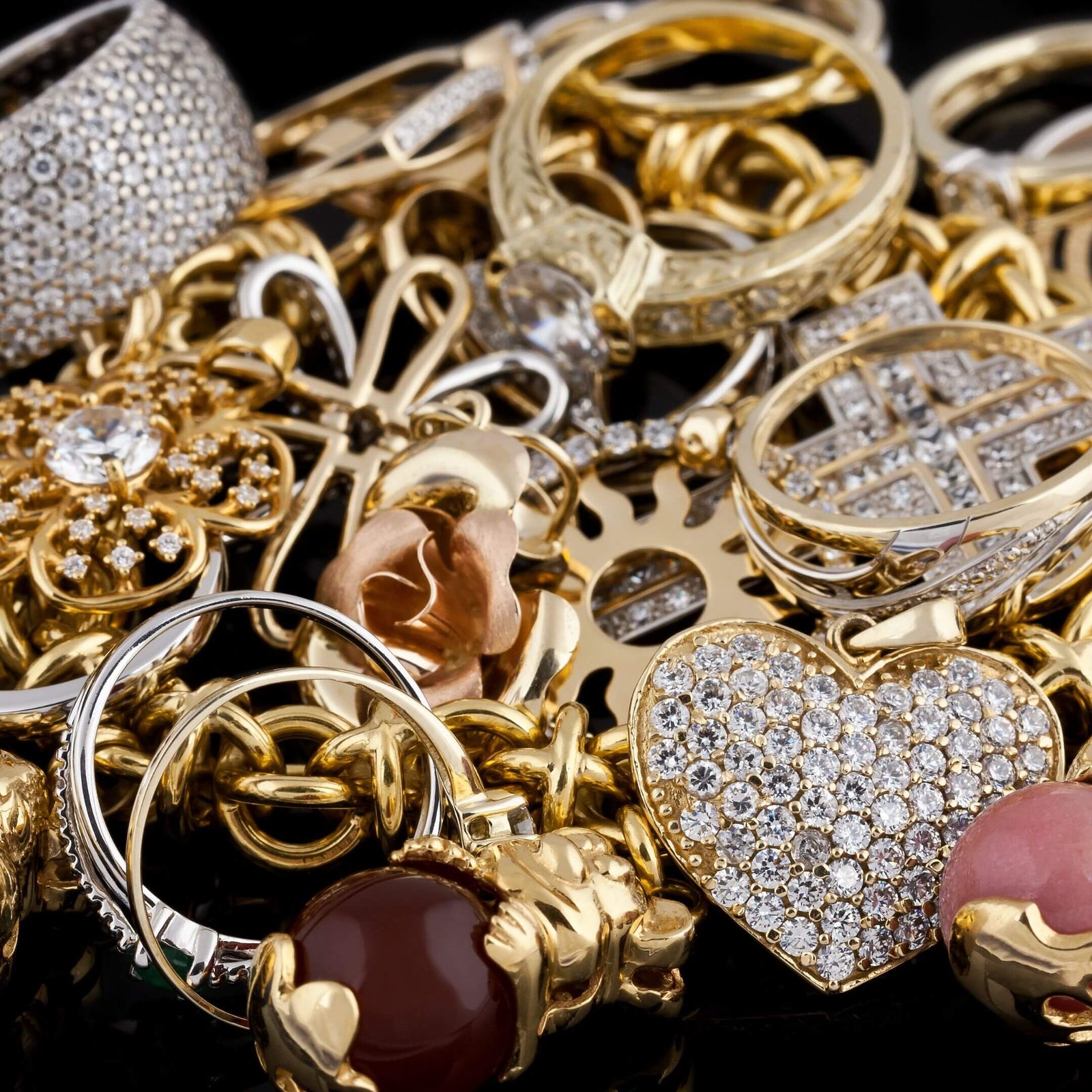🔥15% OFF- CODE GET 15 🔥
🔥15% OFF- CODE GET 15 🔥

Different types of jewellery and metals - Explanations
July 16, 2020 4 min read
With so many metals, terms, values, and techniques involved in creating and choosing jewellery, it can be hard to know what you are buying and what you should actually be looking at. Our handy guide should help you distinguish your gold plate from your 22k and your costume jewellery from your vermeil.
Metals
There are many types of metal available for use in jewellery making.
Gold, silver, platinum, and palladium are examples of naturally occurring precious metals – these can be difficult to work with and are often mixed with other metals – this process is known as alloying.
Base Metals
Base metals (nickel, iron, copper, titanium, and brass) are those that can be mixed or coated to create items of jewellery (see gold and silver plating).
Gold
Pure gold is yellow in colour, but other variants are available.
White gold is a mix of pure gold and white metals, such as nickel, silver or palladium.
Rose gold contains a high proportion of copper.
Green gold does not contain copper.
Copper
The use of copper in jewellery can be dated back to 8BC and it is still popular today. Copper is known for its beautiful earthy brown colour – though it can turn green over time without maintenance.
Nickel
Nickel Silver (referring to the color of the metal rather than a silver content) is popular in costume jewellery and typically made from 60% copper, 20% nickel and 20% zinc. Nickel silver is malleable and inexpensive, though some people can have allergies.
Silver
Pure silver is too soft to be used in jewellery and so Sterling silver, consisting of 92.5% silver and 7.5% copper, is used. It is durable and long-lasting (even strong enough for belt buckles), but can tarnish without proper care (read our blog post on caring for your jewellery for tips).
By adding a layer of thick (minimum 10karat) gold over solid sterling silver jewellery, makers can create vermeil. This looks like gold to the naked eye and is a great budget option.
Silver Plated
Silver-plated jewellery is created by applying a very thin layer of silver over a base metal – usually copper, brass, white metal, or nickel. This type of jewellery can tarnish as the silver wears off and may cause allergy problems if the base nickel is exposed.
Stainless Steel
Stainless steel is made of steel alloy that contains chromium. It does not corrode or rust.
Silver & Gold Bonded
Bonded metal (fused gold and silver) is becoming a popular choice, giving the look and feel of gold at a reduced cost. A sheet of 10 or 14 karat gold is fixed onto sterling silver and formed into jewellery.
Titanium
Is the strongest (natural) metal known to man. It is hypoallergenic, scratch-resistant, lightweight – but not favoured for making rings as it can’t be adapted by soldering or resizing!
Platinum
Platinum is the rarest, and consequently the most expensive, of the metals. Pure platinum melts at 3216.2 degrees Fahrenheit and so is pretty much indestructible!
Platinum can be mixed with copper and cobalt to change the appearance.
Carat
Carat (ct, K, or kt) refers to the percentage of gold within an item.
The ultimate is 24k, which contains 99.9% of gold and is the highest available. Because of the gold content, it is yellow and also very soft, and therefore not suitable for use in jewellery making.
22K = 92.6% gold content – also very soft, popular for wedding bands
18K = 75% gold, can be mixed with white metals to create white gold and copper for rose gold
14K = 58.5% gold, making it more affordable
9K = 37.5% gold, the most affordable form, is stronger and more durable due to its high percentage of other metals.
Gold plating involves bonding a thin layer of gold to a base metal with an electric charge is the process known as gold plating. Invented in 1805 by chemist Luigi Brugnatelli, the technique is commonly used for costume jewellery or creating imitations.
Gold plating can range in thickness between .17 and 2.5 microns (the ideal thickness is .5 to 1.0 microns) and can be done to most metals, such as brass, nickel, silver, copper, and stainless steel.
By gold plating, jewellery designers can replicate more expensive items at a fraction of the cost.
Because there is only a fine coating of gold, these items do not hold as much value as solid items, even when 24k is used.
Gold plating can fade and tarnish over time, not because of the gold but because of the base metal which can be prone to oxidising and corroding. This can be avoided when metals are coated with nickel first.
Thinly electroplated jewellery may also be referred to as a gold tone.
Silver-filled jewellery, also known as silver overlay, is created by using pressure and heat to apply a silver layer to a base metal. Gold-filled jewellery uses the same technique with gold instead of silver.
Fashion jewellery and costume jewellery
To clarify, these two types of jewellery and actually one and the same. Often made from brass, copper, Stainless steel or aluminium (though these may be plated in gold or silver) and decorated with simulated stones and gems such as cubic zirconia.
In addition, any jewellery made from textiles or leather is also classified as fashion jewellery.
Fashion Jewellery v Fine Jewellery
The difference between these two types of jewellery is down to the materials that are used to make them. As the term would suggest, ‘fine jewellery’ is made of platinum, solid gold, sterling silver, and/or other precious metals.
Leave a comment
Comments will be approved before showing up.

